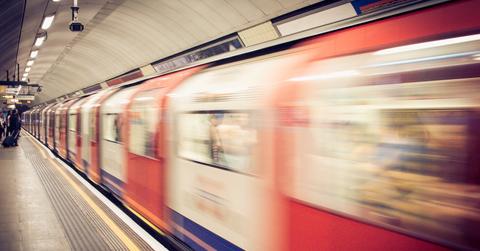By Switching From Plane To Rail, London-Scotland Travel Market Grows While Emissions Drop
Since switching from plane to train service between Central Scotland and London, the London-Scotland travel market has saved almost 700,000 tons of carbon emissions, according to a new report. Could a double-down effort on railways be a feasible, green solution for all commuter hubs?
Updated Nov. 19 2020, 9:40 p.m. ET
Since switching from plane to train service between Central Scotland and London, the London-Scotland travel market has saved approximately 681,064 tons of carbon emissions, according to a new report by Transform Scotland. That number is equivalent to removing all traffic on highly populated M8 highway between Glasgow and Edinburgh (almost 47 miles each way) for two years.
The sheer volume of emissions prevention is enough to inspire every transportation hub to consider how it addresses mass transit needs—and which systems ought to be expanded, limited, or swapped out entirely.
Increased air travel is worsening carbon-emission woes. 
Plane travel is the fastest-growing contributor to carbon emissions; with some experts claiming the best single thing you can do for the planet is to stay out of the friendly skies altogether.
We’ve reported in the past that a meat eater who takes one transatlantic airline flight per year has already met his or her personal carbon budget for the year. Really—that will push you to your environmental-health quota. But figuring out equations is one thing; actually recording the difference is something else entirely.
The United Kingdom’s marked investments in high-speed rail infrastructure has caused a sharp increase in public interest for those systems, all of which is thoroughly outlined in the Transform Scotland report, called “A Green Journey to Growth.”
“Between 2005 and 2015, rail’s market share for trips between Central Scotland and London grew from 20 to 33 percent,” the report states. “There was an increase from 24 to 34 percent for trips between Edinburgh–London, and from 15 to 32 percent for trips between Glasgow–London.”
Efforts like this may be why Scotland is already running six years ahead of schedule on its pledge to cut carbon emissions by 42 percent.
Makes you wonder what would happen if the United States made continued investments in infrastructure focused on railways, rather than rushing emergency fixes when there’s a serious issue (I’m looking at you, Penn Station). What if, instead of small commuter planes, we looked into high-speed rail systems between Dallas-Ft. Worth and Houston? Baltimore and Washington, D.C.? New York City and Boston?
America’s roots are in the rails. Is it time to revisit them? 
Transform Scotland’s numbers point to continued savings in emissions as more low-emission trains are rolled out.
Further emissions savings can be expected through the introduction of the new ‘Azuma’ trains on the East Coast route,” the report states. “We estimate that while a flight from Edinburgh to London emits 177kg CO2 per passenger, and existing trains (‘HSTs’) emit 34kg per passenger, that an Azuma will emit only 28kg — 84 percent less than a flight.”
It’s been proven that widening roads to meet traffic woes for buses and cars only worsens traffic. Meanwhile, more air travel is exacerbating carbon emissions issues. Could a return to our railway routes—and a fresh look at the potential for high-speed rails instead of more regional flights—be a reasonable response to both?
